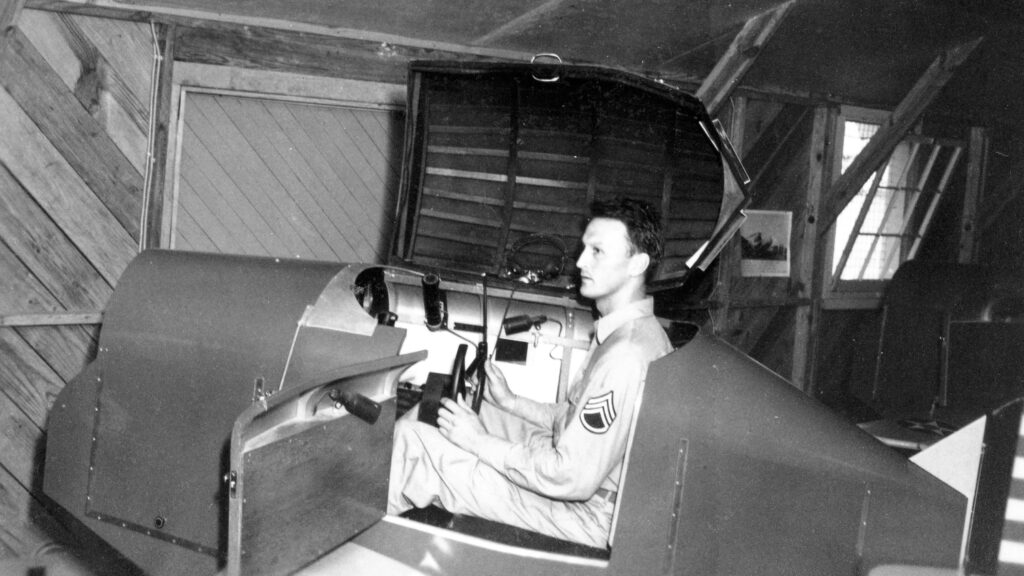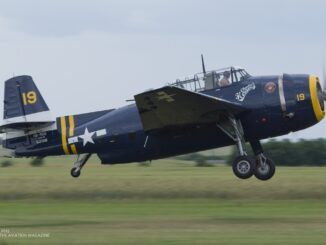 On 14th April 1929, Edwin Albert Link submitted his initial patent application for ´Combination training device for student aviators and entertainment apparatus´. It was approved in September of 1931 and led to creation of the first functional flight simulator ever. The device that not only changed the aviation world but also significantly helped the Allies to win the World War II.
On 14th April 1929, Edwin Albert Link submitted his initial patent application for ´Combination training device for student aviators and entertainment apparatus´. It was approved in September of 1931 and led to creation of the first functional flight simulator ever. The device that not only changed the aviation world but also significantly helped the Allies to win the World War II.
From the early years of aviation, learning to fly was a dangerous, time consuming and expensive process. The first pioneers had to get their piloting skills by themselves, using trial and error method that quite often costed their lives. Then, with opening of the first pilots´ schools, flying adepts were able to learn from experienced instructors.
Together with increased demand for military pilots that was a direct result of the outbreak of the Great War, the first dedicated training aircraft appeared. They usually were military aircraft that turned out to be obsolete or were not meeting combat requirements. Then, as the next step, specifically designed military trainers were introduced, such as Airco DH.6 or Avro 504.
Although the abovementioned development significantly improved the learning procedure, it had not changed the key characteristics of the pilot´s course. It still was quite risky adventure, to train a fully combat capable military pilot was taking a lot of time and required a lot of money.
Edwin Albert Link, son of piano and organ maker, had experienced these difficulties first-hand. Link took his first flying lesson in 1920 but it took him a long seven years to get the pilot´s license. After buying his first aircraft, one of the first Cessna aeroplanes ever made, Link started to give flying lessons and began to look for the way to improve the learning process.
Using his experience from piano and organ manufacturing, Link created a device resembling a cockpit section of aircraft fuselage that was equipped with controls and – with vacuum technology – was able to copy some of the aeroplane motions.
In April of 1929, Edwin Link filled his first patent application for his device. One year later the young entrepreneur established Link Flying School in Binghamton, New York. There, Link for the first time used his device to reduce cost of flying course by performing some initial lessons on the ground. In September of 1931, Link was eventually granted a patent for his ´Combination training device for student aviators and entertainment apparatus´. The first flight simulator ever now became an official matter.
Because the official designation as used by the US Patent Office seemed to be too complicated for commercial purposes, Edwin Link marketed his device as the ´Pilot trainer´ or just the ´Blue box´. He was also constantly developing his initial idea. Within two next years the Link simulator was so advanced that it could be used for instrument flight training. Nevertheless, there was very little interest in the device and the ´Blue box´ was rather recognized as another feature one could see in an amusement park, not at the airfield.

Then, as sometimes happens, a combination of circumstances helped Link and his flight simulator. In the mid-1930s, a series of fraud cases caused by private aviation companies made the US authorities assigned the mail flight service to the US Army Air Corps. Regrettably, it led to several tragic aviation accidents that were broadly publicized thorough the country. Under pressure from public opinion, the USAAC had to implement a recovery programme – and the ´Blue box´ now appeared to be a cost-effective way to improve the pilots´ skills. Eventually, the USAAC ordered six trainers and that purchase launched the career of the Link flight simulator.
In 1937, American Airlines were the first commercial airline to acquire the ´Blue box´. Shortly after, further orders came from the US Navy and Civil Aeronautics Administration, as well from several foreign customers all over the world.
With the outbreak of the World War II, the Link trainer became a standard equipment for every Allied flying school. During the war, approximately 10,000 ´Blue boxes´ were made and, according to official statistics, just in the United States, they helped to train more than 500,000 pilots.
According to Edwin Link biography book – ´From Sky to Sea´, by Susan van Hoek and Marion Clayton Link – Robert Leckie, the wartime Chief of Staff and Air Marshall of the RAF emphasized the importance of the flight simulator and the way it helped the Allies to win the war by saying that ´The Luftwaffe met its Waterloo on all the training fields of the free world where there was a battery of Link Trainers´.
It is also important to mention that, apart from creating the first flight simulator and other aviation-related activities, Edwin Link was also successful in underwater archaeology and research. Together with his wife, Marion Clayton Link, they established The Link Foundation to provide grants in aeronautics and ocean engineering. They also founded an engineering building of Syracuse University.
After the World War II, Link continued with making the flight simulators. Further Link devices manufactured at his company were used to train jet fighter pilots, as well as astronauts from Apollo and space-shuttle programmes.
Edwin Albert Link died on 7th September 1981, at the age of 77. Nevertheless, his company – currently known as Link Simulation and Training, being a division of L3Harris Technologies, is still making aerospace simulators.
In 2000, the Link Flight Trainer was recognized as Historic Mechanical Engineering Landmark by the American Society of Mechanical Engineers.

Cover photo: Link D.2 Trainer, Kbely Aviation Museum in Prague, the Czech Republic



